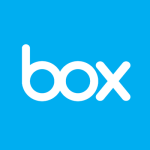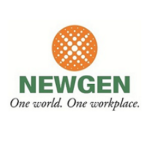The most valuable features of FileNet are the enterprise depth and strength, scalability, integration ability, richness, and functionality; the ability to do a lot of things across the different business units; and integrating with all kinds of solutions. At the same time, I think they did a great job in improving their web clients, such as introducing products like ICN, which is more configurable rather than customizable. The strong foundation behind FileNet in terms of the workflow; the business project management; the content engine; the ability to handle a humongous amount of data in a very high performance mode are what provide a lot of value in this system, in my opinion.
Throughout our journey using FileNet, we were able to significantly improve our business process operations’ efficiency. Think of scenarios where we provide access to the business documents to people who are dispersed across the world; people are working from home or our offshore offices. They don't have to have access to the physical documents. The authenticity of those documents allows our call centers, which are dispersed in different locations in the world, to instantly access the client documents to verify any piece of information.
Beyond document sharing, access, and high performance, the ability to integrate easily with other solutions, our line of business applications, is fantastic. You have a variety of technical options to do this integration. We have legacy systems, and we have newer, more modern solutions; finally, just being able to deal with all of that.
The platform is large, is vast. I see a little bit of ambiguity in the area of integration with Box. I hope this will be clarified in the next steps. The IBM Content Navigator is a great product. It was very much needed. It came at the right time to fill a gap in the user interface area. I think this product, because it does integrate with a variety of IBM products, as an end-user application, it's complex and a little bit more difficult to set up. I would like to see a little more simplicity and ease of use in ICN going forward.
The platform is part of our journey since two decades ago.
Stability’s been great, knock on wood. It's been very solid. It’s funny; we had an outage the same day I provided this review, but it was not caused by FileNet. It was caused by an infrastructure change over the previous weekend. FileNet has been very, very, very stable.
Scalability is fantastic. We did a major replatforming a few years ago. We moved to a newer platform of our AIX, WebSphere, etc.; all virtual. We are able to scale out, scale up. We were able to change the configurations and that has improved the performance of the system by 75%.
We subscribe to the premium support with additional charges, but it is worth every additional dollar that we spend on that, because we saw a huge jump in the quality, responsiveness, and the attention. When you have a dedicated technical account manager that looks after your technology, PMRs, support requests, etc., that is fantastic. We are able to do things far more things more quickly than before. I would say this is an A.
Look at the scale. Look at the enterprise scale. Try to set up the product to leverage it more, maximize the use of the product. FileNet as a stack has massive capabilities. To justify the cost and investment in the product, try to get as many of your business units and business processes to leverage this platform.
Try to consolidate. This is what we have done. We consolidated our content into FileNet as a mainstream platform for ECM. That has paid dividends. We are able to use it as a shared platform. We set it up as a shared service. We charge back to our clients. With that, we are able to measure the value per business unit, compared to the volume that they are using the system, the number of transactions, number of users, etc. Look at the big picture and try to expand as much as you can.
I don't think there is anything perfect, per se. We have been very successful in using the product. We have a lot of opportunities to even add more use cases and so on. The product has been very stable. We have a great relationship with the product owner. Our team is able to do a lot of stuff with the product. It's a solid platform.
Considering that the platform has been stable and scalable, how the experiences of our internal and or external customers changed since implementing FileNet is a big area of focus; number one in terms of evaluating the product. Our clients have been quite satisfied. When I mentioned we were able to improve the performance of the platform by changing the infrastructure and tuning the performance, that has resulted in great savings. Imagine 75% improvement in performance, response time of the system, that is directly linked to the productivity of the end users who number in the thousands.
In general, the most important criteria when selecting the vendor to work with really depends on the use cases. If it is a situation where critical business processes will depend on the product, the stability, the availability, and all that stuff, then I definitely would have to scrutinize each and every area of the product. In general, we take care of our own development. We rely on the vendor for only specialized skills. The ease of use of finding resources in the market who know the product is very important. When the vendor is flexible in attending to our needs, this is very important because if I compare FileNet to other systems in our area, it's like day and night between the two vendors, where, if I try to get something done through the other vendor, it's more of a challenge.
We are not considering employing IBM cloud, hybrid, or box solutions in the short-term, but we are assessing this.
As far as new analytics or content management services that we're now able to provide your organization, we are implementing IBM Case Manager, including the analytics piece of it. We are very interested in exploring further content analytics. It's still on our roadmap. We're taking some steps to explore that.
There certainly are existing services that we're now able to provide better than before in some client processing areas with our business partners. We have taken some strides in improving and renewing the solution from a legacy, hard-coded solution on all their platforms; it has influenced our way of dealing with those business processes.
We certainly do have some plans to include mobile, and that is still in the process of maturing the business requirement.













